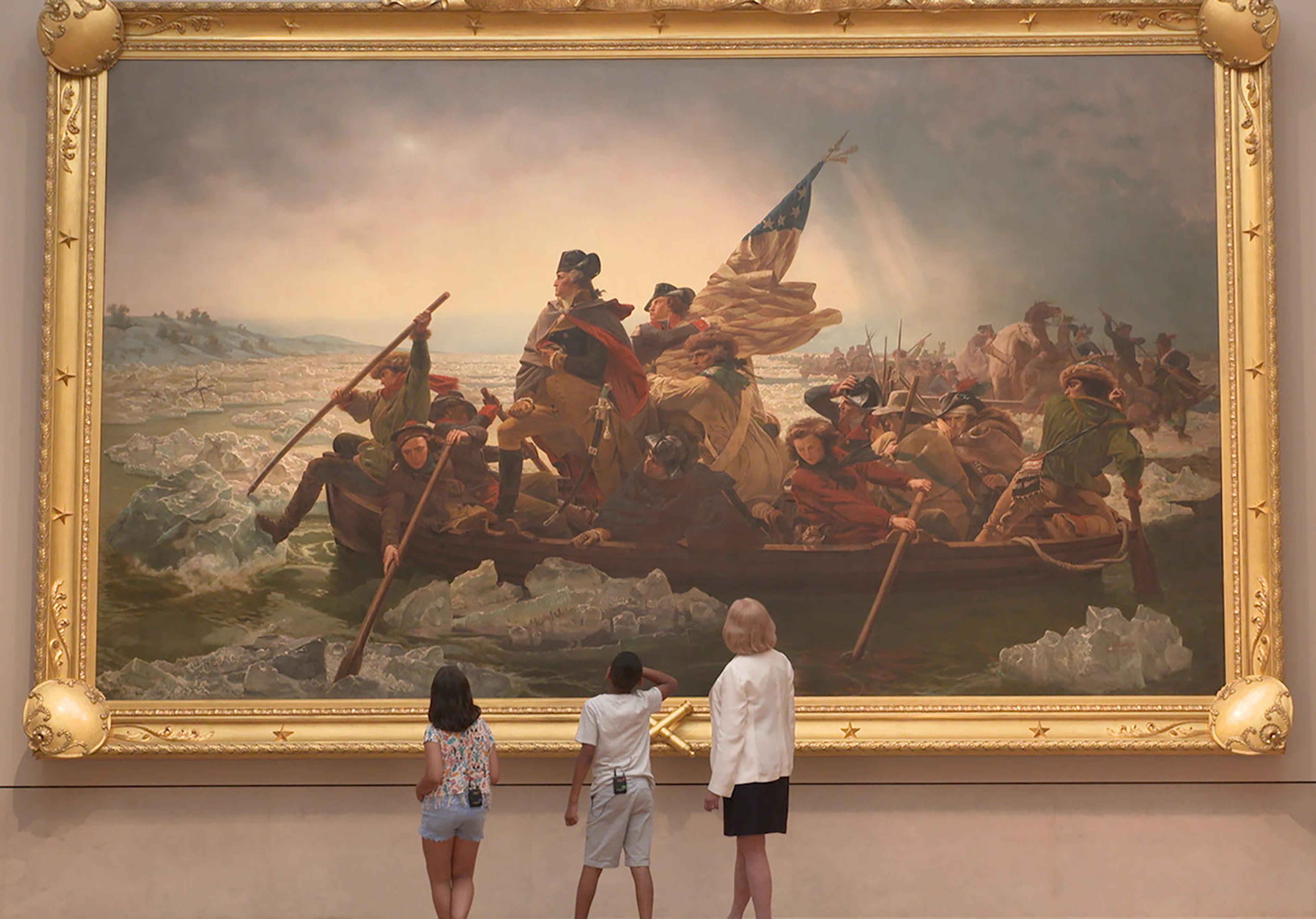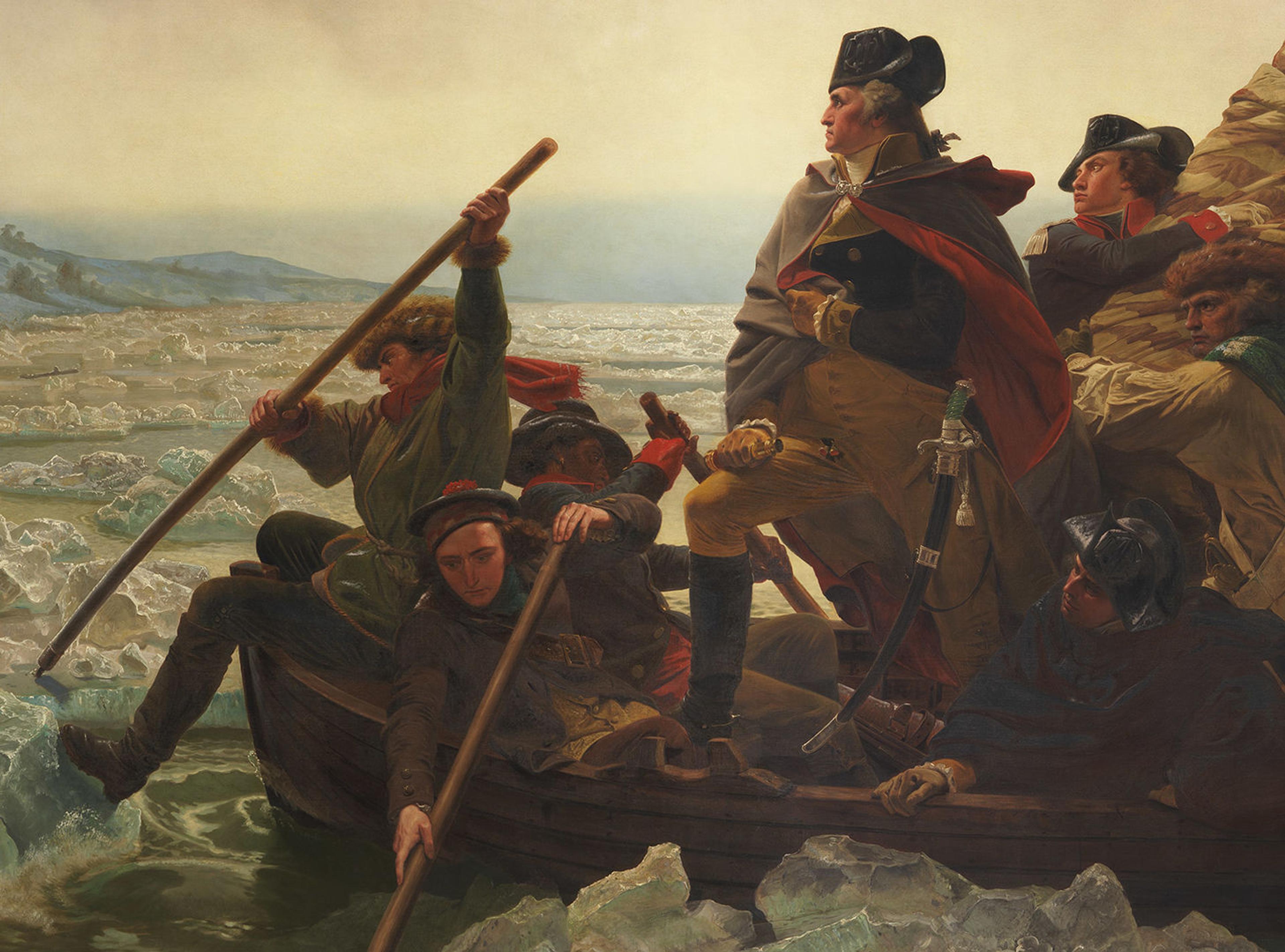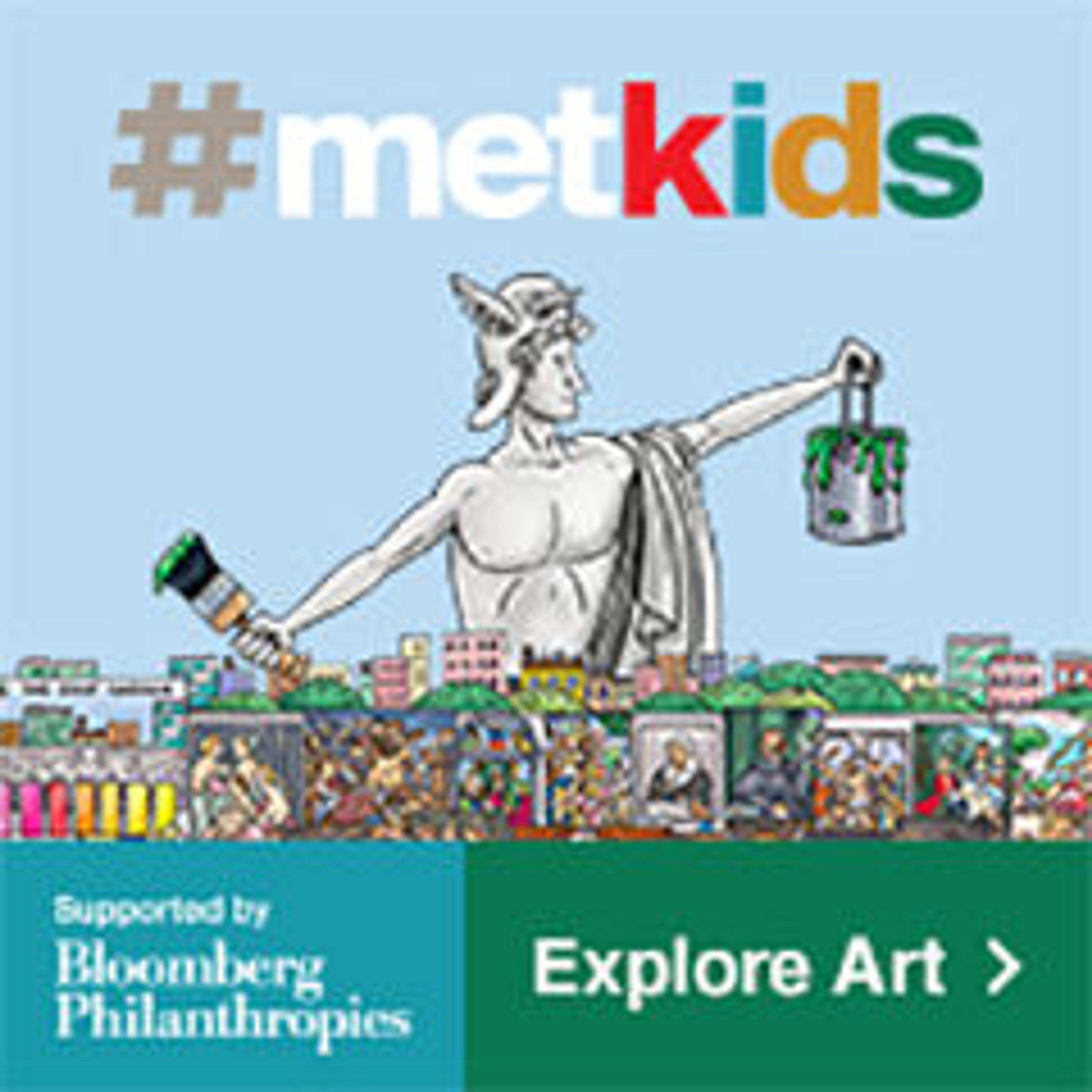Can a Painting Tell More Than One Story? #MetKids Looks at Washington Crossing the Delaware

Gaia (left), Carmelo (middle), and Curator Betsy Kornhauser (right) look at a big painting up close in our latest #MetKids video
Lots of people might recognize the painting Washington Crossing the Delaware because it has appeared in textbooks, on TV shows, and more. It shows a scene from the American Revolution, with General George Washington standing up at the front of a crowded boat.
But did you know that the artist, Emanuel Leutze, was from Germany, and that his own home country was experiencing a revolution in the late 1840s, when he started the painting? Leutze chose to recreate the night of an important victory that actually happened in the American war, but he also chose to paint some changes to the story. Are you curious what they are?
Carmelo, age 9, and Gaia, age 10, had a lot of questions about this painting, so they came to The Met to talk with curator Betsy Kornhauser. They wanted to find out how closely the painting sticks to what happened in history. All the textbooks say that the troops crossed at night. So why is there a morning star in the sky? And who are the soldiers surrounding General Washington? Are they actual people from history? If so, where are they from and what are their names?
Watch the video above to find out, then read on to learn more!

George Washington has his foot on the rowing bench. You can see the red of Prince Whipple's cuff next to Washington's knee. Emanuel Leutze, (American, 1816–1868). Washington Crossing the Delaware (detail), 1851. Oil on canvas, 149 x 255 in. (378.5 x 647.7 cm). The Metropolitan Museum of Art, New York, Gift of John Stewart Kennedy, 1897 (97.34)
In the video, Betsy tells Gaia and Carmelo that one of the people in the painting is probably a Black man named Prince Whipple who actually lived at this time. You can see him rowing near General Washington; he's the seated black soldier with red cuffs. Born in Africa, Prince Whipple was brought to America as a slave when he was still a child. He grew up in New Hampshire and served a man named William Whipple, who was a colonel in the American Revolution and one of the signers of the Declaration of Independence. The state of New Hampshire outlawed Black men from serving in the Revolution, but Prince often followed William to battles, working as his aide and bodyguard.
We don't know for sure if Prince Whipple was actually in the boat with George Washington, as the artist shows. But there were other Black soldiers who actually did cross the Delaware as a part of Washington's troops. Many made deals with their masters—they would fight in the war if they were given their freedom afterwards. Yet their masters often did not honor these deals. Some Black soldiers, like Prince, did not gain their freedom until years after the war had ended, and others remained enslaved. The ideals of the Revolution were liberty and independence, but the struggle to end slavery was far from over.

Jacob Lawrence (American, 1917–2000). Struggle Series—No. 10: Washington Crossing the Delaware, 1954. Egg tempera on hardboard, 12 x 16 in. (30.5 x 40.6 cm). The Metropolitan Museum of Art, New York, Purchase, Lila Acheson Wallace Gift, 2003 (2003.414). ©2019 Artists Rights Society (ARS), New York
Leutze was not the only artist to paint Washington crossing the Delaware. So did the modern African American artist Jacob Lawrence.
Lawrence visited The Met as a teen and saw art from around the world. Mexican murals, African sculptures, and European paintings stirred his imagination. In his own paintings, he often chose to paint the people around him in Harlem. At that time, in the 1930s, community art workshops in Harlem were some of the only places in the U.S. that supported young Black artists like Lawrence.
Lawrence's paintings of African Americans in Harlem helped make him a well-known artist. Like Leutze, Lawrence explored themes of freedom and independence. Lawrence also painted events from American history, but he chose to present these in new ways. For example, his paintings highlight African Americans, most of whom had been forced to cross the Atlantic Ocean and work as slaves. They are not usually shown in older and more traditional history paintings, but their experiences are central to the story of fighting for liberty and justice in American history.
Take a look at Jacob Lawrence's painting of the soldiers crossing the Delaware river (above). How is it similar to and different from Leutze's painting? Is there a detail, a person, or a story you are surprised to see? Tell us about your observations in the comments below!

Emanuel Leutze's painting (left) and Jacob Lawrence's (right) were both inspired by the night George Washington and his troops crossed the Delaware River during the American Revolution.
Further Reading
"Over the Line: The Art and Life of Jacob Lawrence," a teacher's guide produced by the Whitney Museum of American Art.

Visit #MetKids, a digital feature made for, with, and by kids! Discover fun facts about works of art, hop in our time machine, watch behind-the-scenes videos, and get ideas for your own creative projects.
Emily Sun
Emily Sun is a MuSe intern for #MetKids media production and online features.